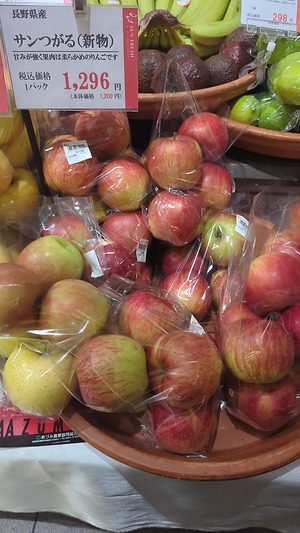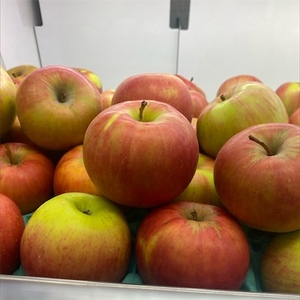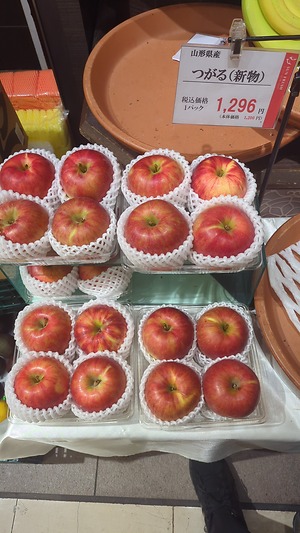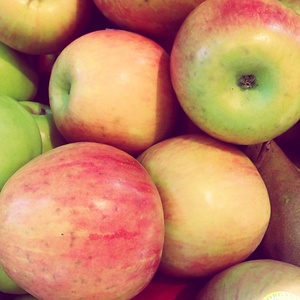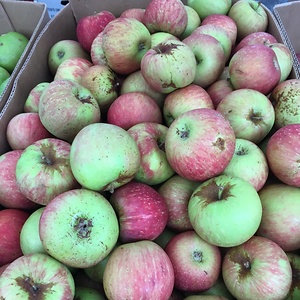

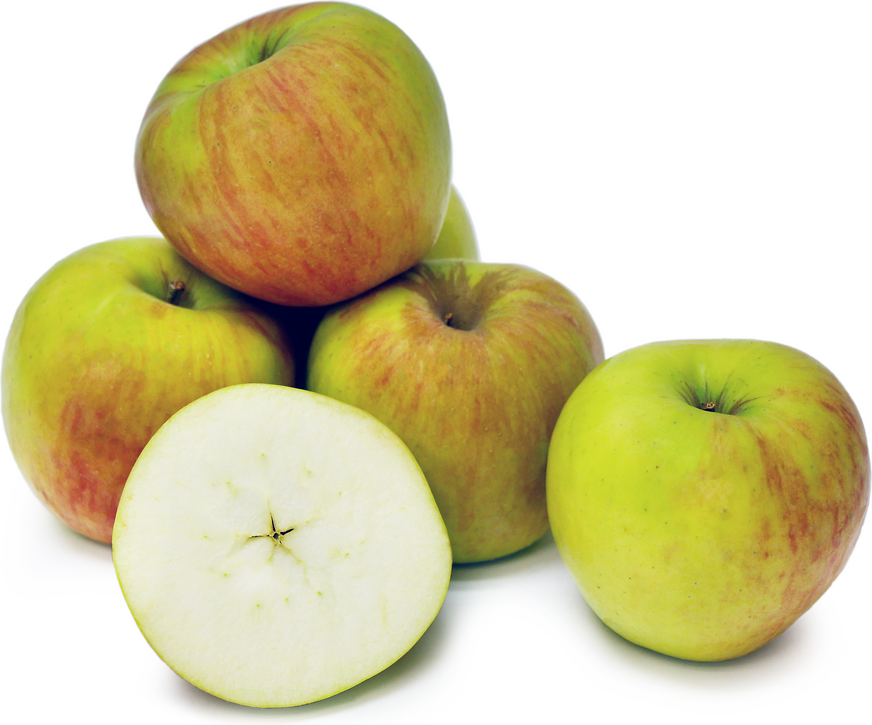
Tsugaru Apples
Estimated Inventory, lb : 0
Description/Taste
Tsugaru apples are moderately sized, round to conical fruits with a somewhat uniform shape and light russeting within the stem’s cavity. The skin is firm, slightly sticky, and has a yellow-green base that may be covered with red mottling, blushing, and striping. Underneath the surface, the flesh is dense, white, crisp, and aqueous, encasing a small central core filled with black-brown seeds. Tsugaru apples have an intensely sweet flavor with an acidic and mildly tart undertone.
Seasons/Availability
Tsugaru apples are available in late summer through early winter in Japan.
Current Facts
Tsugaru apples, botanically classified as Malus domestica, are an early-ripening variety that belongs to the Rosaceae family. The Japanese cultivar is considered to be one of the sweetest varieties available in commercial markets and was named after the district of Tsugaru, located in the Aomori prefecture. Tsugaru apples are traditionally cultivated with two distinct methods using bags around the fruit. One method is known as San Tsugaru, where the fruits are left to grow on the tree with full sun exposure to develop the highest sugar content. The other method involves covering the Tsugaru fruits in bags to prevent exposure to sunlight, creating a paler skin tone with a tarter flavor.
Nutritional Value
Tsugaru apples are a good source of fiber, which can help regulate digestion and provides vitamin C, which is an antioxidant that can increase collagen production and boost the immune system. The apples also contain some vitamin A, calcium, potassium, and iron.
Applications
Tsugaru apples are best suited for raw applications as their very sweet flavor is showcased when consumed fresh, out-of-hand. The crisp, juicy apples don’t brown quickly when sliced and are a favored snack variety for children’s lunches, fruit bowls, and green salads. The apples can also be blended into smoothies, pressed into juices, used as a topping on pancakes, oatmeal, and cereal, dried for extended use, or served with dips, nuts, and cheeses on appetizer plates. In addition to fresh eating, Tsugaru apples can also be utilized for their sweet flavor in baked preparations such as pies, muffins, tarts, and cakes, or they can be cooked into jams, compotes, and apple butter. Tsugaru apples pair well with cheeses such as blue, cheddar, and goat, nuts such as walnuts, pistachios, almonds, and hazelnuts, spices such as nutmeg, cinnamon, and cloves, vanilla, caramel, and fruits such as oranges, grapes, and pears. The fresh fruits will keep 1-3 months when stored in the crisper drawer of the refrigerator.
Ethnic/Cultural Info
In Japan, the Aomori prefecture is one of the top apple-producing regions, accounting for over fifty-six percent of the apples found in commercial markets. The northern prefecture has a suitable climate for apple cultivation with four distinct seasons, and apples were first introduced to the region in the 1870s through English teacher John Ing and headmaster Kantei Kikuchi. Legend has it that Kikuchi planted apple trees in his garden, and Ing gifted his students with the apples as a sweet, crunchy snack. The students highly favored the new fruit, and with word spreading across the prefecture about the fruits, Kikuchi donated new saplings to families in Tsugaru, encouraging the spread of apple cultivation throughout the region.
Geography/History
Tsugaru apples are native to Japan and were developed at the Aomori Prefectural Apple Experimental Station in the 1930s. The variety is a cross between a kodama and golden delicious apple, and after approximately forty years of trials, Tsugaru apples were officially released to commercial markets in 1975. Today Tsugaru apples are only available for a short season and are cultivated in the Aomori, Yamagata, and Nagano prefectures in Japan. The apples were also introduced to the United States in 1999 and are cultivated through specialty farms and sold at select farmer’s markets.
Recipe Ideas
Recipes that include Tsugaru Apples. One



